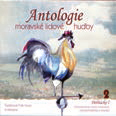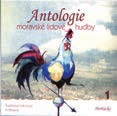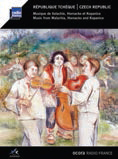Czech Republic: Music from Walachia, Horňácko and Kopanice
Author: Simon Broughton
View album and artist detailsAlbum and Artist Details
Traditional Folk Music in Moravia: Dolňácko
Artist/band: |
VARIOUS ARTISTS |
Label: |
Indies Scope |
Magazine Review Date: |
Apr/May/2012 |
Traditional Folk Music in Moravia: Horňácko
Artist/band: |
VARIOUS ARTISTS |
Label: |
Indies Scope |
Magazine Review Date: |
Apr/May/2012 |
Artist/band: |
VARIOUS ARTISTS |
Label: |
Ocora |
Magazine Review Date: |
Apr/May/2012 |
Compared to neighbouring Hungary, whose traditional music has an international profile, the folk music of the Czech Republic is little known. There was nothing like the Hungarian dance-house movement in Czechoslovakia to give the music a contemporary credibility, and under the Communist regime it was rather kitschified. But something of a grassroots scene does exist in south-east Moravia in the hilly region where Moravia, Slovakia and Austria meet. I visited some of the fašank (carnival) celebrations a few years ago and was hugely impressed by the subtle shifting dance rhythms and powerful fiddle playing. The music on these discs all comes from this musically fertile region. The region of Walachia (Valašsko in Czech) shouldn't be confused with Wallachia in Romania, the home of Taraf de Haidouks. The Ocora album features recordings made by Czech Radio in March 2010. It is interspersed with demonstrations of various shepherd's flutes played by Vít Kašpaik and between them are a couple of choirs and local cimbalom bands. I particularly like the energy in Petr Mička's Horňácko Cimbalom Band and this is the music that is most typical of the region, with fiddles, kontr fiddles, bass and cimbalom, an influence from Hungary in the 1930s. But although these are recent recordings, it comes over like a folkloric display lacking in genuine vigour.
It's the life and vivacity of the Horňácko disc that makes it the best of these three. It's a small mountainous region on the Slovak border famed for its music, with an unbroken tradition going back hundreds of years. The opening track by the band of fiddler Martin Hráč shows the infectious power of this music, with its irregular pulsing sedlácká dance rhythm and decorative fiddle lines. Other highlights include the veteran singer František Okénka and the young fiddler Miroslav Minks whose band was the one that most impressed me when I was in the region. My only reservation is the overblown vocals of some of the singers, but that seems to be part of the style.
The Dolnácko disc features music from the neighbouring lowland region where sometimes a bagpipe is added to the line– up – and brass instruments in the case of the Radošov band on the final track. The music doesn't have the same quirky mountain quality as that from Horňácko, but there's still plenty of dance-like spring. The Olšava band with fiddler Lubomir Málek and the Husličky band with female vocalist Vlasta Grycová are excellent. These Indies discs have good notes by Helena Bretfeldová on the music and musicians. There are two more volumes planned covering other South Moravian regions. They will provide an excellent overview – although all the CDs would benefit from better maps: the Ocora one has no map at all, a distinct drawback.



